Mastering KCSE Biology with Comprehensive Topical Questions and Answers
NUTRITION IN PLANTS AND ANIMALS
The diagram below shows chemical reactions I, and II which are controlled by enzymes respectively.
1. 1989 Q1 P1
Name reaction II and enzyme B
2. 1990 Q1 P1
Explain the biological principles behind the preservation of meat be:-
3. 1991 Q4 P1 State one similarity and one difference between parasitic and predatory modes of feeding 4. 1991 Q9 P1 In an investigation, the pancreatic duct of a mammal was blocked. It was found that the blood sugar regulation remained normal while food digestion was impaired. Explain these observations. 5. 1992 Q1 P1 (a) Name the products of light reaction in photosynthesis. (b) Explain why insectivorous plants such as Drosera species trap and digest insects
6. 1992 Q12 P1
a) (i) Identify the mode of feeding of the animal whose dental formula is given below I 0 C0 pm 3 m2 2 0 3 2 (ii) Give reasons for your answer in (a) (i) above (b) Give four ways by which the tapeworm is (taenia Spp) is adapted to living in the alimentary canal of its host. 7. 1993 Q1 P1 Explain how a greyish black substance develops on a moist slice of bread after a few days. 8. 1993 Q5 P1 Give a reason why lack of roughage in diet often leads to constipation 9. 1993 Q18 P1 (a) Name the various methods used in preserving food. (b) Explain how each of the methods you have named in (a) above works. 10. 1994 Q20 P1 Describe the economic importance of: i. Bacteria ii Fungi
11. 1995 Q5 P1
State the role of light photosynthesis (2 marks) 12. 1995 Q7 P1 Complete the table below on mineral nutrition in plants (3 marks) 13. 1996 Q4 P1 Name the disease in humans that is caused by lack of vitamin C (1 mark) 14. 1996 Q7 P1 (a) State the role of light in the process of photosynthesis (1 mark) (b) Name one end product of dark reaction in photosynthesis (1 mark) 15. 1997 Q10 P1 Name a disease caused by lack of each of the following in human diet. Vitamin D___________ Iodine___________
16. 1997 Q20 P1
(a) What is meant by the term digestion? (b) Describe how the mammalian small intestine is adapted to its function 17. 1998 Q2 P1 State one effect of magnesium deficiency in green plants
18. 1998 Q14 P1
In an experiment to investigate a factor affecting photosynthesis, a leaf of a potted plant which had been kept in the dark overnight was covered with aluminum foil as shown in the diagram below
The set up was kept in sunlight for three hours after which a food test was carried out on the leaf.
(a) Which factor was being investigated in the experiment? (b) What food test was carried out? (c)
19. 1998 Q20 P1
Explain how the mammalian intestines are adapted to perform their function. 20. 2001 Q5 P1 State two functions of muscles found in the alimentary canal of mammals. 21. 2001 Q12 P1 The graph below shows the effect of substance concentration of the rate of enzyme reaction.
(a)
(c) State two other factors that effect the rate of reaction of enzyme reaction
22. 2001 Q16 P1
An experiment was carried out to investigate the nutritional value of two dry powder animals feeds X and Y over a period of six months. Twenty 5 month’s old castrated goats were use. The goats were divided into two equal groups A and B. The animal’s in group A were fed on feed X throughout the experiment while those of group B were fed on feed Y. The feeds were supplemented with dry hay and water. The average body weight of each group of goats and the weight of the dry powder feeds were determined and recorded each month. The faeces produced by each group was dried and weighed and the average dry faecal output per month was also recorded. The results are as shown below.
(a)
(i) What is the relationship between the amount of feed and the faecal output (ii) Work out the average increase in weight for the animal’s in group A during The first four months The last two months (iii) Account for the average increase weight in goats in group A during the first four months
The last two months
(iv) Which of the two feeds is more nutritious? Give reason for your answer (b) State four uses of digested food in the bodies of animals (c) State four uses of water in the bodies of animals
23. 2002 Q3 P1
a) State the function for co-factors in cell metabolism b) Give one example of a metallic co – factor 24. 2002 Q10 P1 What happens to excess fatty acids and glycerol in the body? 25. 2003 Q8 P1 State a function of the large intestine in humans 26. 2004 Q9 P1 Name two mineral elements that are necessary in the synthesis of chlorophyll. (2 marks) 27. 2006 Q8 P1 State the role of vitamin C in humans. (2 marks)
28. 2006 Q11 P1
State the role of insulin in human body. (1 mark) 29. 2006 Q17 P1 a) Distinguish between the terms homodont and heterodont. (1 mark) b) What is the function of carnassials teeth? (1 mark) c) A certain animal has no incisors, no canines, 6 premolars and 6 molars in its upper jaw. In the lower jaw there are 6 incisors, 2 canines, 6 Premolars and six molars. Write its dental formula. 30. 2006 Q18 P1 a) State two functions of bile juice in the digestion of food. (2 marks) b) How does substrate concentration affect the rate of enzyme action? (1 mark) 31. 2006 Q27 P1 Name the end products of the light stage in photosynthesis. 32. 2007 Q6 P1 Describe what happens during the light stage of photosynthesis (3 marks) 33. 2007 Q7 P1 The diagram below represents a section though a human tooth
(a) (i) Name the type of tooth shown (1 mark)
(ii) Give a reason for your answer in (a) (i) above (1 mark) (b) State the functions of the structures found in part labelled J (2 marks) 34. 2007 Q8 P1 (a) Name a fat soluble vitamin manufactured by the human body (1 mark) (b) State two functions of potassium in the human body (2 marks) 35. 2007 Q25 P1 (a) The action of ptyalin stops at the stomach. Explain (1 mark) (b) State a factor that denatures enzymes (1 mark) (c) Name the features that increase the surface area of small intestines (2 marks) 36. 2008 Q5 P1 (a) State two factors that affect enzymatic activities (2 marks) (b) Explain how one of the factors stated in (a) above affects enzymatic activities 37. 2008 Q9 P1 Give three factors that determine the amount of energy a human being require in a day (3 marks) 38. 2008 Q10 P1 (a) Name the antigens that determine human blood groups (2 marks) (b)State the adaptation that enables the red blood cells to move in blood capillaries (1 mark) 39. 2008 Q15 P1 Explain what happens when there is oxygen debt in human muscles (2 marks) 40. 2008 Q16 P1 The diagram below represents a set up that was used to investigate certain process in a plant
(a) State the process that was being investigated (1 mark)
(b) State a factor that would affect the process (1 mark) 41. 2008 Q18 P1 How is the epidermis of a leaf of a green plant adapted to its function (2 marks) 42. 2008 Q23 P1 The diagram below shows a human tooth (2 marks)
(a) Identify the tooth (1 mark)
(b) How is the tooth adapted to its function (1 mark) (c) State the role of the following vitamins in the human body (i) C (1 mark) (ii) K (1 mark)
43. 2008 Q24 P1
Name the sites where light and dark reactions of photosynthesis take place (2 marks) Light reaction……………………………………………………………………… Dark reaction……………………………………………………………………… 44. 2009 Q18 P1 Explain how the following factors affect the rate of photosynthesis: (a) Concentration of carbon (iv) oxide (1 mark) (b) Light intensity (1 mark) 45. 2009 Q22 P1 Explain how the carnassials teeth of a dog are adapted to their function (2 marks) 46. 2009 Q23 P1 State the function of iron in the human body (1 mark) 47. 2009 Q24 P1 Explain how the following factors determine the daily energy requirement in human: (a) Age ( 1 mark) (b) Occupation (1 mark) (c) Sex (1 mark) 48. 2009 Q2 P2 The diagram below represents the lower jaw of a mammal
(a) Name the mode of nutrition of the mammal whose jaw is shown (1 mark)
(b) State one structural and one functional difference between the teeth labelled J and L Structural (1 mark) Functional (1 mark) (c) (i) name the toothless gap labeled K. (1 mark) (d) Name the substance that is responsible for hardening of teeth (1 mark) 49. 2010 Q16 P1 What is the role of bile salts in humans? (2 marks) 50. 2010 Q17 P1 The following is the dental formula of a certain mammal: i 0/3 c 0/1 pm 3/3 m3/3 a) State the likely mode of feeding for the mammal. (1 mark) b) Give a reason for your answer in (a) above. (1 mark) 51. 2011 Q2 P1 a) Write the dental formula of an adult human. (1 mark) b) Name two dental diseases. (2 marks) 52. 2011 Q13 P1 State two functions of carbohydrates in the human body (2 marks) 53. 2011 Q18 P1 a) Name one salivary gland in humans. (2 marks) b) State two functions of saliva. (2 marks) 54. 2012 Q1 P1 How does nutrition as a characteristic of living organisms differ in plants and animals? (2 marks) 55. 2012 Q11 (b) P2 Name the muscles found in the following organs: Stomach; ……………………………………………….. Bone……………………………………………………… (2 marks) 56. 2012 Q29 P1 Name two nutrients that are observed without being digested by enzymes in humans. (2 marks) 57. 2012 Q3 P2 (a) In an investigation, equal amounts of water was placed in three test tubes labeled G,H and J. Pond weeds of equal length were dropped in each test tube. The test tubes were then placed in Identical conditions of light and carbon(IV)oxide at different temperatures for five minutes. After five minutes, the bubbles produced in each test tube were counted for one minute. The results were as shown in the table below.
(i) Name one requirement for this process that is not mentioned in the investigation. (1 mark)
(ii) Name the gas produced in this investigation. (1 mark) (iii) Account for the results in test tubes H and J. (2 marks) (b) State two ways in which the human intestinal villus is adapted to its function.(4 marks)
6 Comments
Mohammed Ochieng
31/5/2016 05:25:02
thanks
Reply
Derick ochieng lombo
11/11/2016 09:15:39
Dat is gud
Reply
Purity Deborah masigah
3/3/2024 13:51:30
Thanks
Reply
Kabiru mercy njeri
5/4/2024 06:53:35
I really appreciate for this past papers for they will introduce me in my kcse examination. Thank you .I would like you to send me past papers for form 2 work.tuko pamoja maishani tuinuane eh .
Reply
Leave a Reply. |
Archives
December 2024
Categories
All
TOPICSFORM 1
Form 2
Form 3
Form 4
|
||||||||||||
We Would Love to Have You Visit Soon! |
Hours24 HR Service
|
Telephone0728 450425
|
|
8-4-4 materialsLevels
Subjects
|
cbc materialsE.C.D.E
Lower Primary
Upper Primary
Lower Secondary
Upper Secondary
|
teacher support
Other Blogs
|
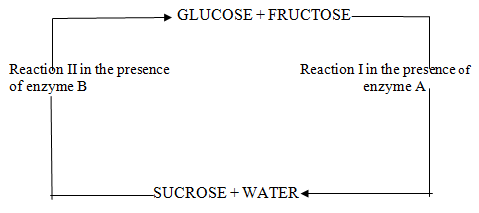

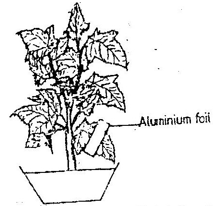
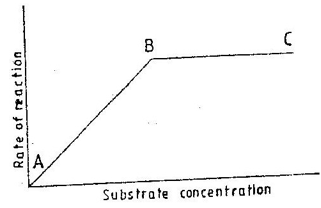
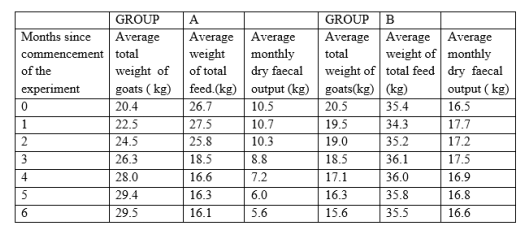
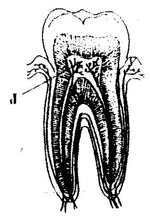
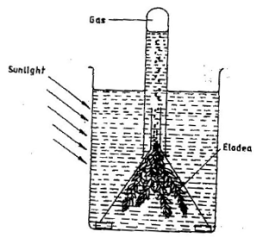

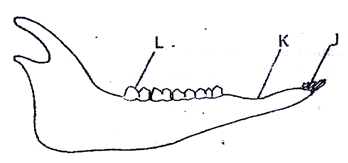
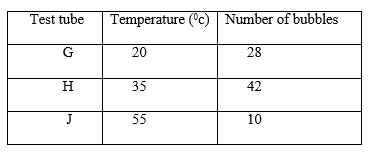







 RSS Feed
RSS Feed